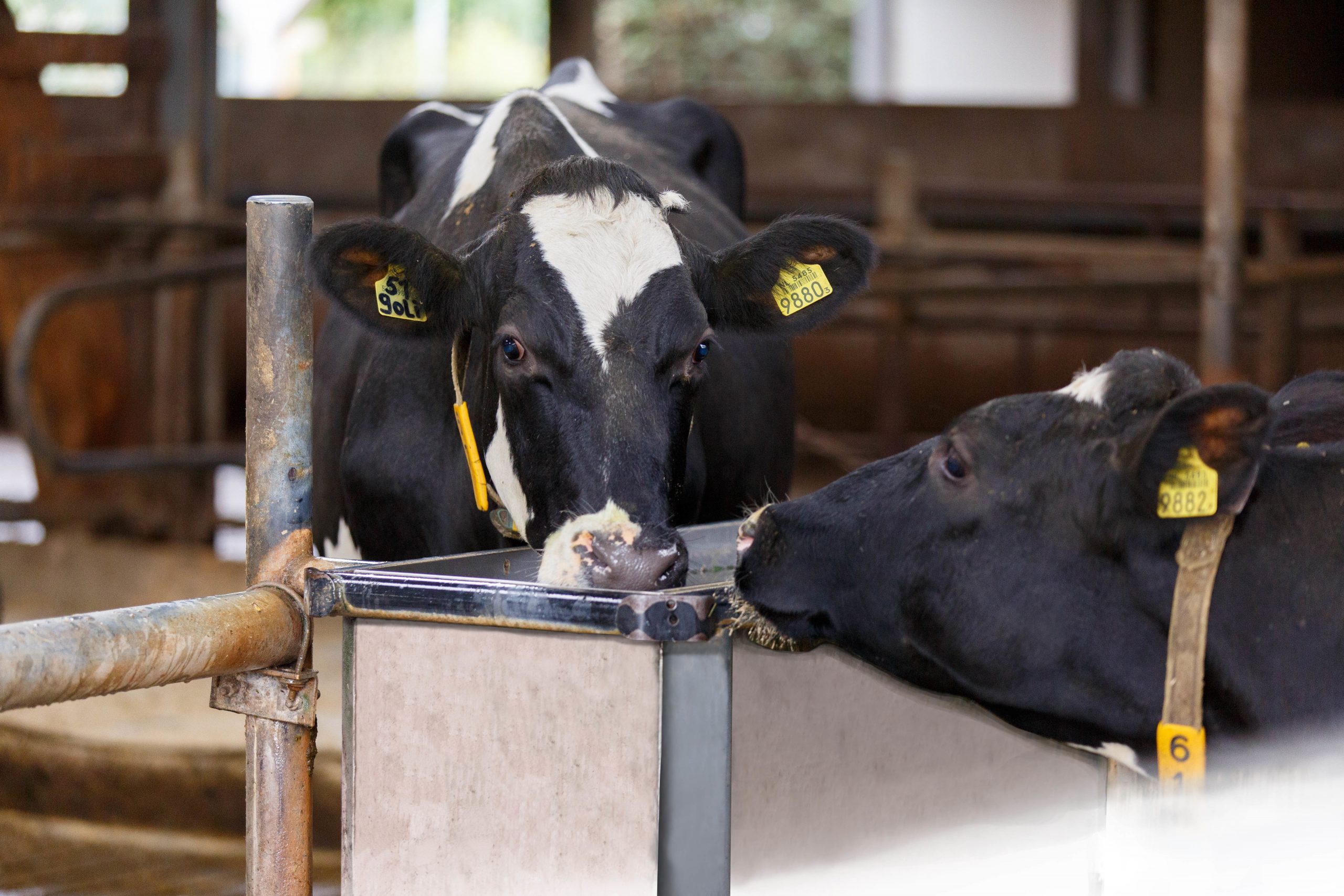Good quality water: An essential nutrient for dairy cows

An improved water quality leads to an increased milk production and better animal health in dairy cattle. However, water is often an overlooked nutrient. A new study looked at novel ways to remove the biofilm and microorganism from the drinking water system.
Water is an essential, but often overlooked, nutrient. It serves many functions in both the human and animal body, such as a building material, solvent, reaction medium/reactant/reaction product, lubricant, shock absorber and it serves an important role in the thermoregulation (Jéquier and Constant, 2010). In order to fulfil its many functions, it is important that the water supply is sufficient and of high quality.
Microbiological and organic biofilm
In the agricultural sector, and especially the dairy sector, the drinking water quality of animals is often neglected. The drinking water may be contaminated with bacteria, which are present in the drinking water systems that are covered with microbiological and organic biofilm (LeJeune et al., 2001). The healthy mammalian gut includes a high number of commensal bacteria, which are beneficial micro-organisms, that exist in homeostasis with the immune system of the dairy cow (Chow et al., 2010). The intake of pathogenic bacteria from low quality drinking water disturbs this homeostasis and may thus have negative consequences for the health of the cow.
Fresh water also for calves
Previous studies demonstrate a negative association between low water quality and a decrease in milk production (Murphy, 1992). Cows will consume less water if the quality is insufficient. Besides fat, protein and lactose, milk is composed for 87% of water. The water supply is partly originating from the metabolism and the feed, but the largest part (80-90%) originates from the drinking water (Jéquier and Constant, 2010; van Ginneken, 2015). However, cows will consume less water if the water quality is insufficient, which can have severe consequences on the health status of the animals. Also for calves, it is important to have fresh water available from the first day of life. Milk flows to the abomasum, while water enters the rumen to support the rumen development, improves grain fermentation and starter intake.
Measuring the quality of water
Water quality can be measured within seconds using the Intra Clean Quick scan kit, containing a device that measures the ATP content originating from living organisms, which is expressed in relative light units (RLU). This method was used to determine the water quality at different sample points on 26 dairy farms in the Netherlands (Table 1). This demonstrates that even if the incoming water is of excellent quality, the final drinking water that is consumed by the animal may be heavily polluted.
Field study in dairy cows
A study was done to investigate the effect of improving the drinking water quality of dairy cattle with a water-based solution of hydrogen peroxide and activated silver* (hereafter called water-based solution) on important parameters like milk production. This water-based solution is effectively used for the removal of biofilm from drinking water systems (cleaning) and elimination of micro-organisms (disinfecting). It has proven efficacy in PT02 (disinfectants), PT03 (veterinary), PT04 (food & feed) and PT05 (drinking water) applications. The study was performed on the Dairy Academy in Oenkerk, the Netherlands, having 165 cows in lactation, 20 dry cows, and 135 calves and heifers. Before the study started, the farm had been using an electrolysis system (generating chlorine) for the duration of four months, but this worked insufficiently because the water was only disinfected and the water system itself was not cleaned by this approach. At the start of the study, the water quality was determined at the source, the water storage tank, and at the drinking bowls of the calves and troughs of the heifers and dairy cows. The quality of the incoming water was suitable for human consumption (10 RLU), but already from the water storage tank the RLUs were far above the threshold of 300 RLU for animal consumption and required direct action with values above 1,000 RLU (Figure 1).
Figure 1 – Water quality measured at 5 different sample points expressed in RLUs.

Quick drop of RLU values
The water storage tank was emptied and cleaned, followed by the continuous addition of 50-100 ppm of the water-based solution to further clean the entire drinking water system until RLU values below 300 were obtained at all sampling points. The water quality in the tank immediately changed to levels suitable for human consumption (<70 rlu). the water quality of the other sampling points decreased in time to levels suitable for animal consumption (below 300 rlu) within one month for the troughs of the lactating cows, the other troughs and drinking bowls reached this level after one month (>Figure 1). Afterwards, the water-based solution dosing intensity was lowered to one day per week to maintain the good water quality. All sampling points remained below the 300 RLU, typically even below 100 RLU, for the further duration of the test. This is remarkable, since the animals were constantly polluting the troughs with their mucus and feed residues. </70>
Impact on milk yield and protein
The key performance numbers of the period (2015-2016) with the water-based solution and the preceding year without the water treatment can be seen in Table 2. The daily milk yield per cow had improved with 1.3 kg. The protein level increased with 0.19%, which together with a 3 mg/dl decrease in urea indicates a better protein utilisation. The farm managed to increase the herd size by maintaining a lower number of young stock per 10 dairy cows and fewer days of drying off. The decrease in pre-weaning calf mortality from 6.5 to 3.0% illustrates another important advantage of improving water quality at the entire farm level.
Conclusion
This study emphasises the importance of a clean water system and sanitised water to guarantee optimal health and performance of calves, heifers and dairy cows. The results demonstrate that it is possible to clean the drinking water system and disinfect the water using the water-based solution, and to maintain the system clean for the period of currently up to one year. The improved water quality resulted in an increased milk yield, higher protein content and an overall positive effect on animal health.
*Intra Hydrocare (www.intracare.nl). References are available on request.
Authors: Gerwen Lammers, Phd, Daisy Roijackers, Msc, Marc Spackler, Msc And Carly Vulders, Bsc, Intracare, The Netherlands.











